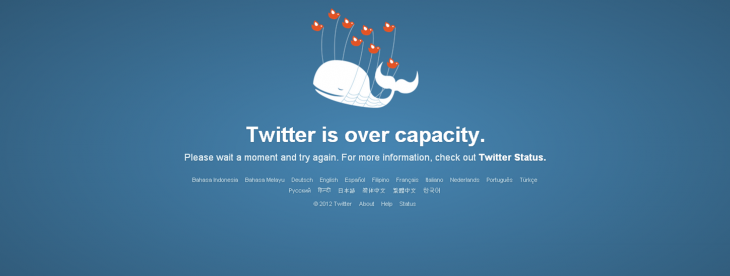Product Design ft. Hello, Startup — the User
Product Design ft. Hello, Startup — the User
In the first part of the series I talked through Hello Startup’s process to coming up with a solid idea and validating it before you even begin the building process. In this installment of the series, we’ll discuss user-centered design, which will help us to design our product with a great user experience from the start.
Designing for Users
When it comes to software the user only understands what they are directly seeing. For someone who needs a ride, a ride sharing app is a button on their phone that orders a car. For someone using a smartphone, it consists of the parts they can see, hear and touch. Users don’t see what’s hidden beneath the surface of it such as the the operating system or hardware. This is what many of us know as the iceberg secret.

You know how an iceberg is 90% underwater? Well, most software is like that too — there’s a pretty user interface that takes about 10% of the work, and then 90% of the programming work is under the covers. And if you take into account the fact that about half of your time is spent fixing bugs, the UI only takes 5% of the work. And if you limit yourself to the visual part of the UI, the pixels, what you would see in PowerPoint, now we’re talking less than 1%.
That’s not the secret. The secret is that People Who Aren’t Programmers Do Not Understand This. — Joel Spolsky in The Iceberg Secret, Revealed
If you were to show someone a user interface that doesn't look good then they are going to assume the whole app is bad. While the saying goes to never judge a book by its cover that is exactly what’s going to happen with poor presentation. Hello Startup sums it up well in saying that “design is fundamentally about how to present information so other people can understand it and use it”.
“Designer” may not be part of everyone’s official title but everyone is certainly a designer to a degree. Over time and through experience with many projects, you begin to recognize what does and doesn’t work and how a specific audience may react to the design. This is why design isn't about just making it look good, it’s also about helping users achieve their goals. This starts with an understanding of the user.
User-Centered Design

If software causes someone to feel dumb because they can’t understand it, then the software has failed. If a user is struggling more to accomplish their goals than they were prior to using the software, then its design should have a second look. It’s not about the beautiful buttons or number of features but how easy it can help a user accomplish their goals.
When building any software it’s essential that you have an understanding of the users. Yes, a feature may be cool but if its not something a user actually needs then its implementation should be reconsidered. From day one design should be incorporated into the development process using the five principles of user-centered design.
1. User Stories
User stories are short descriptions of what is being built from the perspective of the user. They should tell you who the user is, what they are trying to accomplish and why they need it. The stories help overcome the curse of knowledge by making you more empathetic to the user and considering their perspective. At Echobind, our user story template is as follows.
As a _____, I want to _____ so that _____.
The user stories will serve as the “source of truth” for development and what the final product should accomplish.
2. Personas
The users for a software’s audience will vary and trying to please everyone only spells trouble. Instead, design should be done for personas. These are fictional characters that represent a real user of the software who has specific goals, traits and desires. Having personas handy forces you to think about real people and consider various aspects about them such as their personalities. To gain the most benefit from personas Hello Startup suggests they should include:
- Name
- Age
- Short bio
- Work history
- Skills
- Goals
3. Emotional Design
Have you ever yelled at your printer for breaking down for the hundredth time or love an app so much that you swear by it? Whether we realize it or not software invokes emotional reactions similar to how we’d interact with other humans. This is why more and more apps are starting to have a touch of humanity to them, my personal favorite being Twitter’s fail whale.

Imagine how you’d feel if you go to a site experiencing issues and all you’re met with is a generic error page. Or how about no error at all? While it still invokes an emotional response it will be that of frustration compared to seeing a page with a more friendly, human touch.
4. Simplicity
You don’t create simplicity, you reduce unessentials until what’s left is simple and essential. No project starts with a blank slate. There’s knowledge, ideas and so many other things to consider. Think of it as the first draft of an essay. It’s always a mess and you reduce, cut out and refine it until you’re left with its core purpose.
“The sculpture is already complete within the marble block, before I start my work. It is already there, I just have to chisel away the superfluous material.” — Michelangelo

The same is done with software and how we achieve MVP. When building new software, there are tons of ideas, concepts and feature requests. Like with the essay, you cut down and remove things until you are left with the very core of the software’s design. Instead of thinking about what your app should do, think more of what it shouldn’t do to help you reduce and cut out the unnecessary.
Make no mistake, however. Software can be incredibly complex but using it should be simple. The next principle of user-centered design helps us see if we’ve accomplished this.
5. Usability Testing
No matter how much validation you do or how much more you think you know than users, you will still be wrong. The ultimate test to seeing if all the work so far will work out is by putting the design in front of real users. The goal here is to see how people will use the software to accomplish specific tasks.
In order for the usability testing to be valid there is to be no interference. Even if the users make mistakes and start to become frustrated it will bring to light issues that can be resolved and prevent in the future.
Up Next
In the next part of the series, we’ll continue through Hello Startup’s chapter on product design, this time focusing on the more visual aspects of design. Remember, this is only a fraction of the valuable information that can be found in this book and I highly recommend picking up your own copy for more in-depth explanations and examples.
Until next time!



